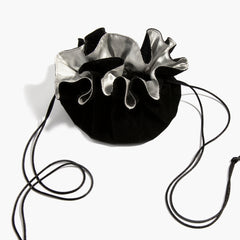You’ve seen them before, ornate skulls with vibrant colors, beautifully adorned with designs and flowers. Sometimes referred to as a “sugar skull”, the calavera, or skull in Spanish, is a powerful symbol from Mexico to celebrate the Day of the Dead. Explore their significance, history, and meaning.
_____
History These beautiful skulls were first seen in the 17th century in a traditional fashion. Created to honor the dead on DÃa de los Muertos (happening this year on October 28th-November 1st), the "Day of the Dead," they have roots in Aztec, Mayan, and Toltec cultural celebrations. You can see them in ancient art as well as in graffiti and art being sold today.
They have many forms, one being made of sugar, called calavera de azucar. The sweet treat is given to someone living, usually with their name on the top in icing. The other forms include any artwork, like jewelry, porcelain, clay, a painting, etc… which are used on the home altars of people in Mexico. The DÃa de los Muertos is spent in reflection, honoring ancestors and those who have passed, and experiencing the healing of reminiscing with family about them. This sacred day also involves many flowers that have popped up in the marketplaces, streets, and homes of people. People also adorn their home altars with photographs of the deceased, candles, and maybe even the favorite food of their loved one. This time is not to be confused with Halloween, as they are separate holidays and traditions.
Finally, Calaveras are seen in political cartoons and poetry. These serve as a reminder that those in power won’t be there forever, and a way to poke fun at those in charge.
Cultural Meaning and Symbolism Calaveras are so deeply entrenched in Mexican culture, and it is important to honor its roots and the sacred and deep-rooted history. It ties into the way the culture sees life and death and how that impacts their daily lives.
Calaveras are a potent reminder of our own mortality. It sounds morbid or macabre, but in actuality, it serves as a statement that death is just as powerful and sacred as life, and that it is bound to happen, so have a little light hearted look at it. This sugar coated (pun intended) way of approaching death takes the fear out of what is inevitably going to happen, and tell us to live life to the fullest. It also serves as an important reminder to honor those who have passed with love, light, a smile, and courage, and that we will be honored too. Calaveras serve as solid proof of faith in the afterlife.
When you see a calavera, smile and dance with joy. It is a reminder that you are alive, breathing, and although life is fleeting, there is no fear. Live each moment like it is your last, freely and deeply, and never forget the support of your ancestors around you and honor them. This makes you, and everyone you love, eternal.



